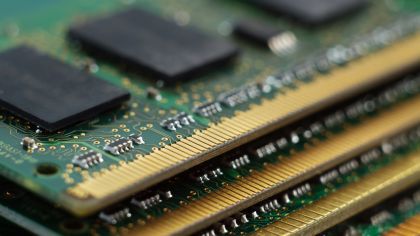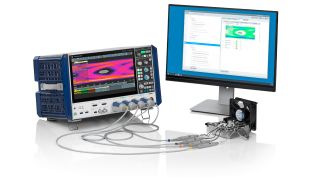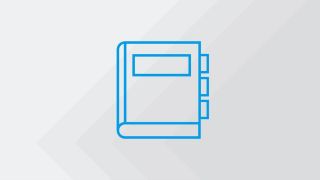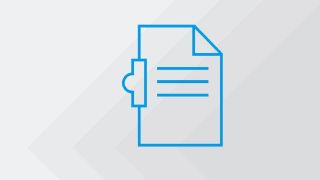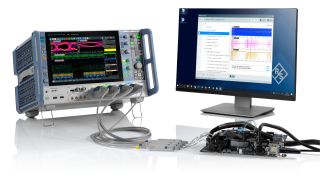Our DDR testing solutions
The R&S®RTO64 and R&S®RTP oscilloscopes provide dedicated application options for conducting DDR3, DDR4 and DDR5 memory interface tests. The DDR options for both oscilloscopes are unique on the market for supporting READ/ WRITE decoding DDR signals, enabling eye diagram functionality and providing automated compliance tests to the official JEDEC specifications of the DDR & LPDDR standards.
Most of the problems designers are facing with DDR memories will be in the board layout; issues such as inadequate bandwidth, cross-coupling from other functional blocks, mismatches in impedance, or jitter. Both R&S oscilloscope families feature a wide range of functions for debugging signal integrity issues , starting from Zone-Trigger, Advance Eye Analysis, Jitter and Noice decomposition, or Power Integrity analysis, and more.
The bandwidth of the oscilloscope is the most significant factor for determining which DDR generation at which data rate can be tested. For system testing the bandwidth should cover the 3rd to the 5th harmonic of the fundamental frequency of the tested signal.
- DDR3 , DDR3L , and LPDDR3 (1.2v) require option K91 on an R&S®RTO64 or R&S®RTP.
For DDR3 data rates up to 1.6 GBps an R&S®RTO64 with 4 GHz bandwidth is more than adequate, higher data rates up to the 2.133 Gbps DDR3 an oscilloscope bandwith of 6 GHz is recommended.
- DDR4 or LPDDR4 require option K93 and an 8 GHz R&S®RTP084. To verify the rise times on the data and control signals, an R&S®RTP164B is recommended.
- DDR5 testing is addressed with option RTP-K94, while LPDDR5 requires option RTP-K95 and the 16 GHz RTP model RTP164B.
To simplify and automate compliance procedures with either of these options, the R&S®ScopeSuite software provides:
- The comprehensive graphical Wizard to guide through the compliance procedures from beginning to end.
- Automated control of all necessary oscilloscope settings and compliance test sequences.
- Configurable test reports to document the test results.
Rohde & Schwarz also supplies all the necessary accessories such as highspeed probes with flexible solder-in solutions and deembedding software for the compensation of third party test fixtures from Nexus Technologies or EyeKnowHow for DDR debug, signal integrity testing, validation and compliance testing.
For signal channel testing between DDR modules and processor, Rohde & Schwarz network analyzers (R&S®ZNA, R&S®ZNB) provide signal integrity measurements with a dynamic range and maximum bandwidth that comfortably exceeds all DDR requirements. For both analyzer families, option K2 plus K20 provides time domain analysis including eye diagrams and simultaneous frequency domain analysis.




